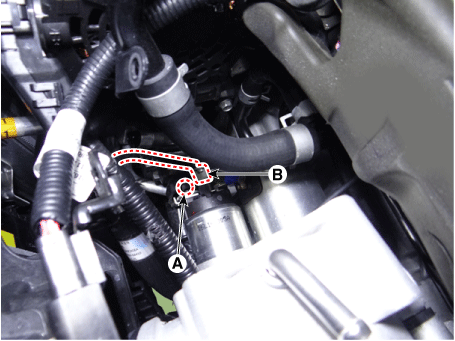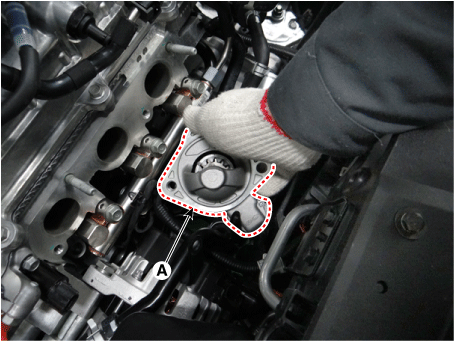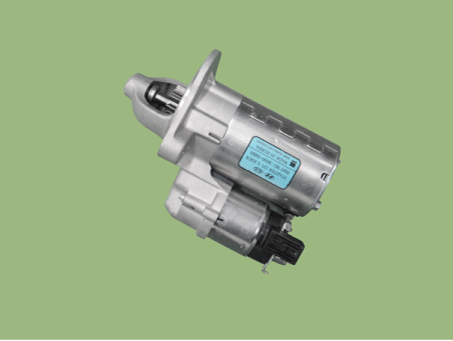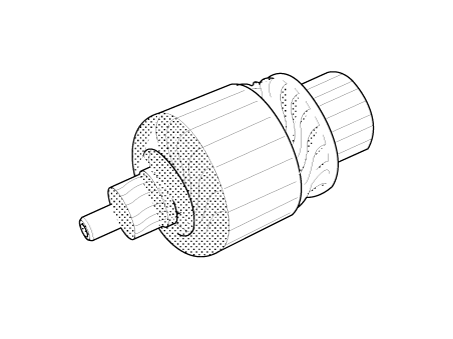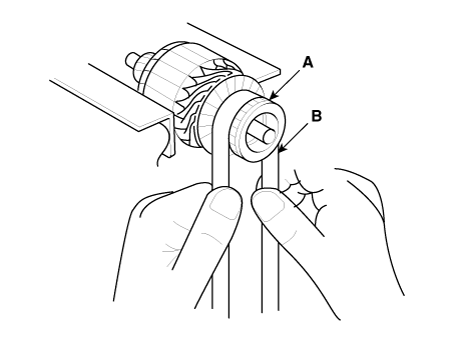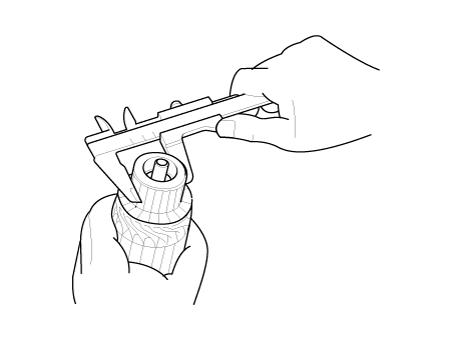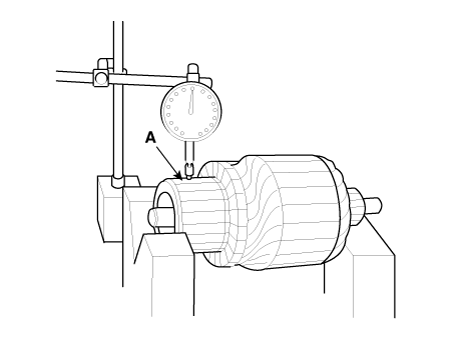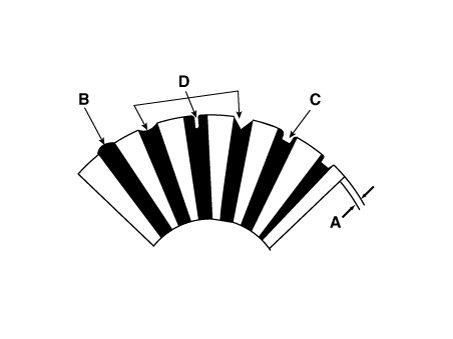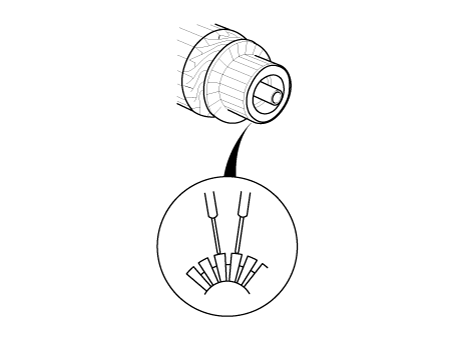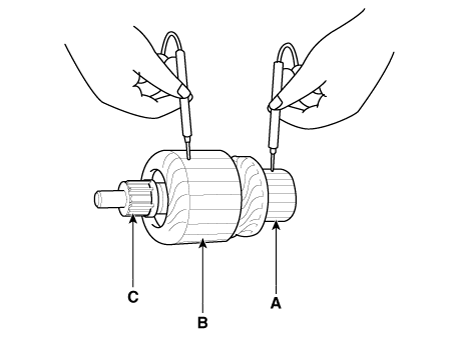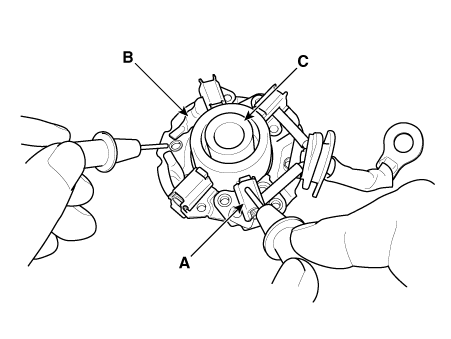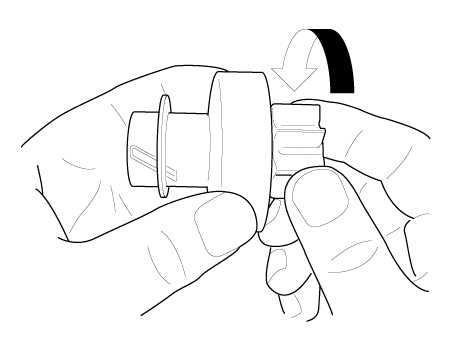Kia Picanto: Starting System / Starter
Specifications
| Specification |
Starter
▷12V, 1.2kW : ISG only
|
Item
|
Specification
| |
| Rated voltage | 12 V, 1.2 kW | |
| The number of pinion teeth | 13 | |
| Performance [No-load, 11.5 V] | Ampere | Max. 117 A |
| Speed | Min. 3,200 rpm | |
▷12V, 0.85kW : NON- ISG
|
Item
|
Specification
| |
| Rated voltage | 12 V, 0.85 kW | |
| The number of pinion teeth | 13 | |
| Performance [No-load, 11.5 V] | Ampere | Max. 85 A |
| Speed | Min. 3,700 rpm | |
Components and components location
| Component |
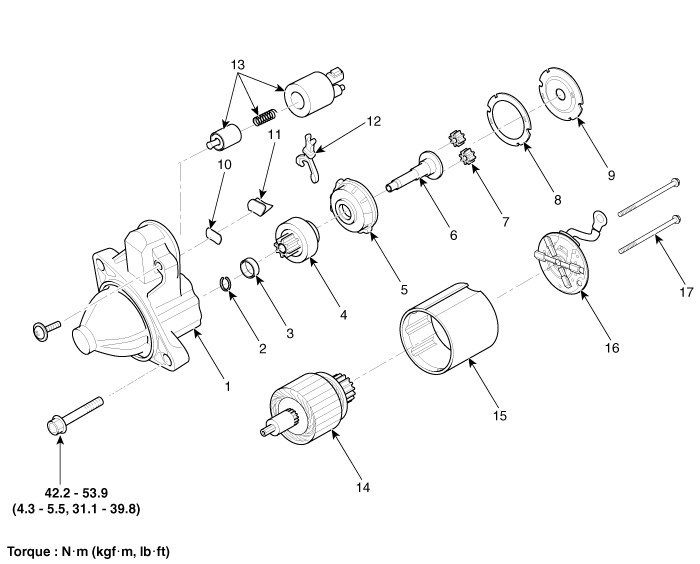
| 1. Front housing 2. Stop ring 3. Stopper 4. Overrun clutch assembly 5. Internal gear assembly 6. Planetary shaft assembly 7. Planetary gear assembly 8. Packing 9. Shield | 10. Lever plate 11. Lever packing 12. Lever 13. Magnet switch assembly 14. Armature assembly 15. Yoke assembly 16. Brush holder assembly 17. Through bolt |
Description and operation
| Description |
The
starting system consists of the battery, starter, solenoid switch,
ignition switch, inhibitor switch (A/T), clutch pedal switch (M/T),
ignition lock switch, connection wires and the battery cable.
When the ignition key is turned to the start position, current flows and energizes the starter motor's solenoid coil.
When
power is supplied, solenoid plunger and clutch shift lever are
activated, and the clutch pinion engages the ring hear, closing the
contacts and cranking the starter motor.
In
order to prevent damage caused by excessive rotation of the starter
armature when the engine starts, the clutch pinion gear overruns.
In
conjunction with the ISG function, the starter motor must do a great
deal more work. Therefore, the starter motor is configured for a
significantly higher number of start cycles. The components of the
starter motor have been adapted to the higher requirements.
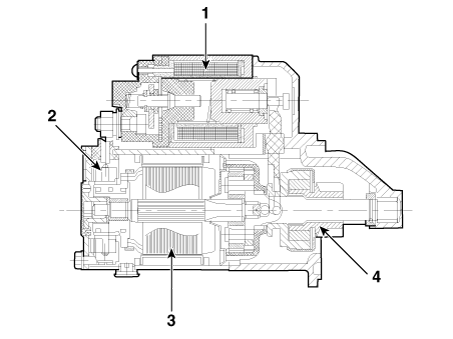
| 1. Solenoid 2. Brush assembly 3. Armature 4. Overrun clutch |
Schematic diagrams
| Circuit Diagram |
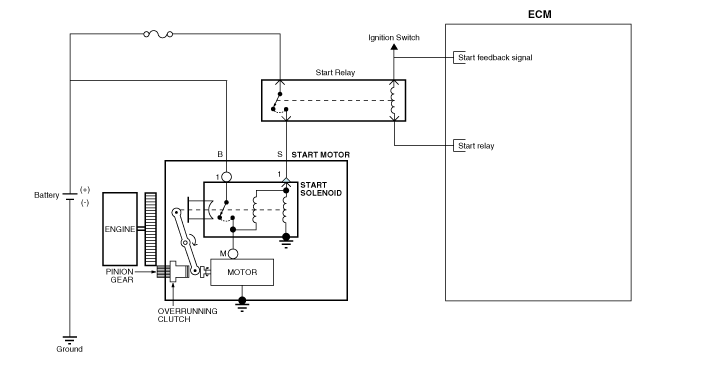
Repair procedures
| Removal |
| 1. | Turn the ignition switch OFF and disconnect the negative (-) battery terminal. |
| 2. | Remove the air cleaner.
(Refer to Engine Mechanical System - "Air Cleaner")
|
| 3. | Remove the intake manifold.
(Refer to Engine Mechanical System - "Intake Manifold")
|
| 4. | Remove the starter solenoid "B" terminal mounting nut (B), and then disconnect the starter cable and ST connector (A).
|
| 5. | Remove the starter mounting bolts and then remove the starter (A).
|
| Installation |
| 1. | Install in the reverse order of removal. |
| Reassembly |
| 1. | Reassemble in the reverse order of disassembly. |
| Inspection |
| Armature Inspection And Test |
| 1. | Remove the starter. |
| 2. | Disassemble the starter as shown at the beginning of this procedure. |
| 3. | Inspect
the armature for wear or damage from contact with the permanent magnet.
If there is wear or damage, replace the armature.
|
| 4. | Check
the commutator (A) surface. If the surface is dirty or burnt, resurface
with emery cloth or a lathe within the following specifications, or
recondition with #500 or #600 sandpaper (B).
|
| 5. | Check the commutator diameter. If the diameter is below the service limit, replace the armature.
|
| 6. | Measure the commutator (A) runout.
|
| 7. | Check
the mica depth (A). If the mica is too high (B), undercut the mica with
a hacksaw blade to the proper depth. Cut away all the mica (C) between
the commutator segments. The undercut should not be too shallow, too
narrow, or v-shaped (D).
|
| 8. | Check
for continuity between the segments of the commutator. If an open
circuit exists between any segments, replace the armature.
|
| 9. | Check
with an ohmmeter that no continuity exists between the commutator (A)
and armature coil core (B), and between the commutator and armature
shaft (C). If continuity exists, replace the armature.
|
Inspect Starter Brush
Brushes that are worn out, or oil-soaked, should be replaced.
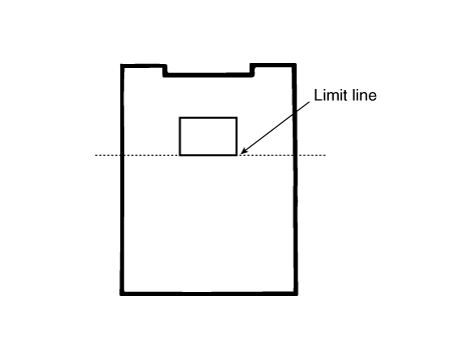
The
seat new brushes, slip a strip of #500 or #600 sandpaper, with the grit
side up, between the commutator and each brush, and smoothly rotate the
armature. The contact surface of the brushes will be sanded to the same
contour as the commutator. |
Starter Brush Holder Test
| 1. | Make
sure there is no continuity between the (+) brush holder (A) and (-)
plate (B). If there is continuity, replace the brush holder assembly.
|
Inspect Overrunning Clutch
| 1. | Slide the overrunning clutch along the shaft. Replace if it does not slide smoothly. |
| 2. | Rotate the overrunning clutch both ways. Check
that it locks in one direction and rotates smoothly in reverse. If it
does not lock in either direction or locks in both directions, replace
it.
|
| 3. | If the starter drive gear is worn or damaged, replace the overrun clutch assembly. (The gear is not available separately.) Check the condition of the flywheel or torque converter ring gear if the starter drive gear teeth are damaged. |
| Cleaning |
| 1. | Do not immerse parts in cleaning solvent. Immersing the yoke assembly and/or armature will damage the insulation. Wipe these parts with a cloth only. |
| 2. | Do not immerse the drive unit in cleaning solvent. The overrun clutch is pre-lubricated at the factory and solvent will wash away lubrication from the clutch. |
| 3. | The drive unit may be cleaned with a brush moistened with cleaning solvent and wiped dry with a cloth. |
 Starting System
Starting System
Description and operation
Description
The
starting system consists of the battery, starter, solenoid switch,
ignition switch, inhibitor switch (A/T), clutch pedal switch (M/T),
ignition lo ...
 Starter Relay
Starter Relay
Repair procedures
Inspection
1. Turn ignition switch OFF and disconnect the negative (-) battery terminal.
2. Remove the fuse box cover.
3. Remove the starter relay (A).
4. Check for co ...
Other information:
Kia Picanto JA 2017-2024 Owner's Manual: Automatic reset (for type B cluster)
To make the average fuel economy be reset automatically whenever refueling, select the “Fuel economy auto reset” mode in User Setting menu of the LCD Windows (Refer to “LCD Windows” on page 4-50). OFF - You may set to default manually by using the trip switch reset button ...
Kia Picanto JA 2017-2024 Service & Repair Manual: Clutch Switch
Specifications Specifications Item Specifications Working voltage DC 12.5V Operating force Initial position : 0.25 ± 0.15 N (0.025 ± 0.015 kg, 0.056 ± 0.034 lb) Full position : 0.8 ± 0.2 N (0.08 ± 0.02 kgf, 0.579 ± 0.0 ...
Copyright © www.kpicanto.com 2017-2024


